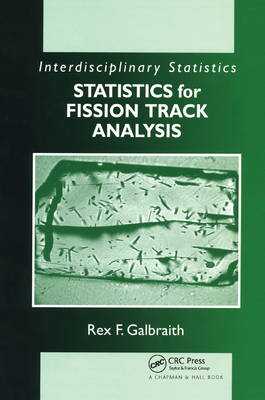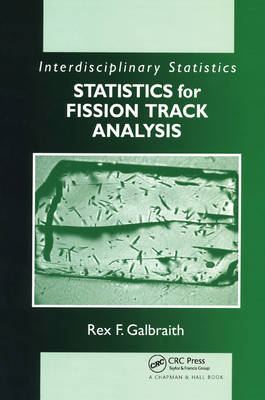
- Retrait gratuit dans votre magasin Club
- 7.000.000 titres dans notre catalogue
- Payer en toute sécurité
- Toujours un magasin près de chez vous
- Retrait gratuit dans votre magasin Club
- 7.000.000 titres dans notre catalogue
- Payer en toute sécurité
- Toujours un magasin près de chez vous
Description
Statistical analyses of the numbers, lengths, and orientations of fission tracks etched in minerals yield dating and thermal history information valuable in geological and geoscience applications, particularly in oil exploration. Fission tracks can be represented mathematically by a stochastic process of randomly oriented line segments in three dimensions, and this "line segment" model can describe and explain the essential statistical features of the data, providing a rigorous foundation for quantitative modelling and simulation studies.
Statistics for Fission Track Analysis explores the line segment model and its consequences for the analysis and interpretation of data. The author derives the equations for fission track data and the theoretical probability distributions for the number, orientation, and length measurements of the tracks. He sets out the theory of fission track dating and through numerical examples, presents methods for analyzing and interpreting fission track counts. Later chapters address statistical models for situations in which samples contain mixtures of fission track ages. These methods, along with observation features of the various measurements, are illustrated by real examples. Finally, the author brings together the theoretical and observation aspects to formulate a joint likelihood function of counts, lengths, and angles as a basis for parametric thermal history modelling. An appendix provides general notes on statistical concepts and methods. Designed for broad accessibility, this is the first book to fully cover the statistical foundations of fission track analysis. Whether you work in a fission track lab, in archaeological, geological, or geochronological research, or in geological applications of statistics, you will find the background material and practical tools you need to optimize the use of fission track analysis in your work and to make further advances in the field.Spécifications
Parties prenantes
- Auteur(s) :
- Editeur:
Contenu
- Nombre de pages :
- 240
- Langue:
- Anglais
- Collection :
Caractéristiques
- EAN:
- 9780367392796
- Date de parution :
- 04-03-20
- Format:
- Livre broché
- Format numérique:
- Trade paperback (VS)
- Dimensions :
- 150 mm x 231 mm
- Poids :
- 362 g







